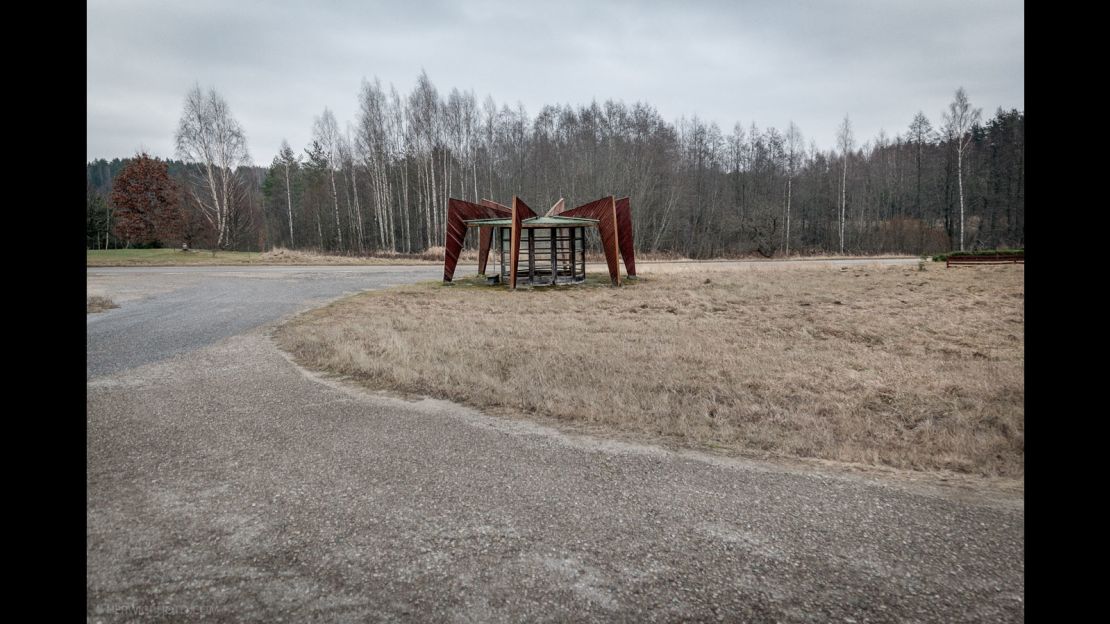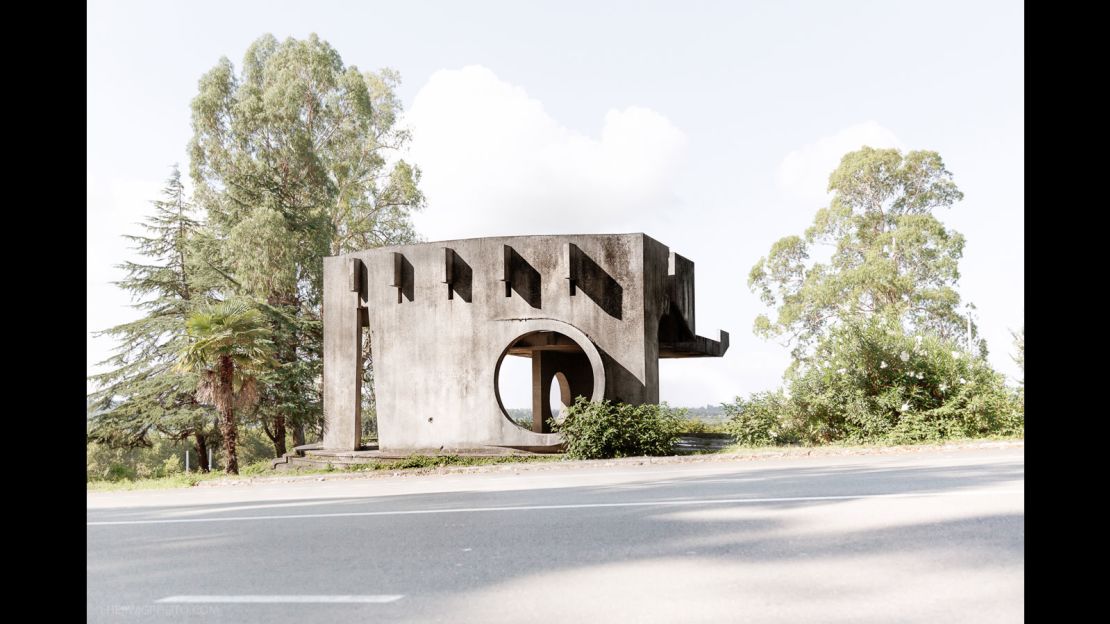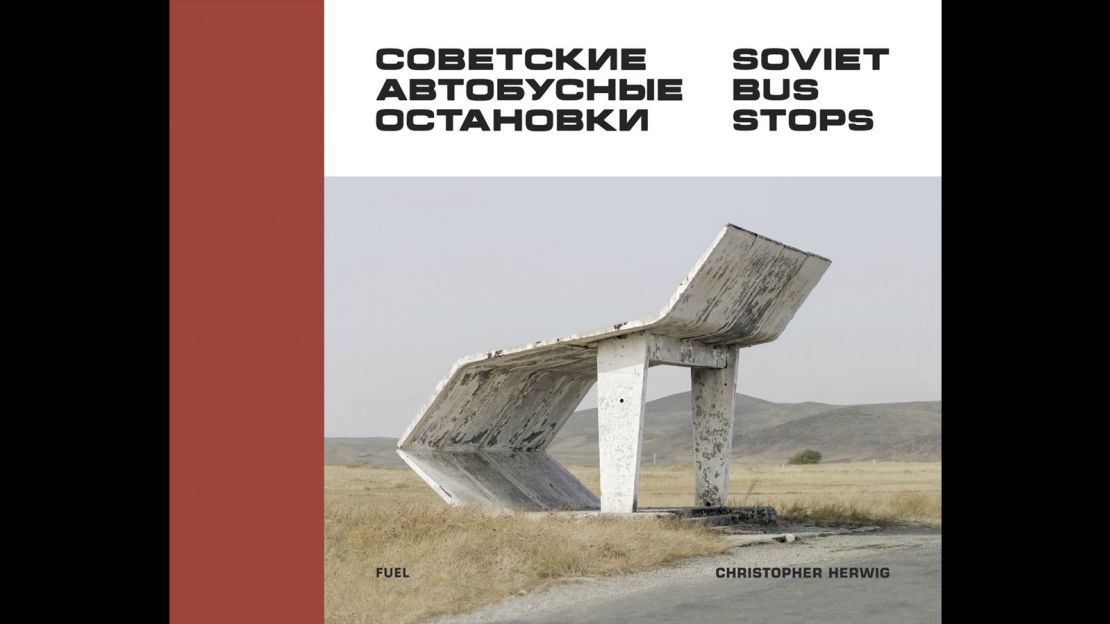Story highlights
Christopher Herwig has spent nearly 15 years photographing old Soviet bus stops
He says the bus stops were rare chances for artists and architects to freely express themselves
After photographing more than 1,000, Herwig's travels have resulted in a book
It’s universally acknowledged that the old Soviet Union had many faults, but creating weird and wonderful structures that celebrate the humble bus ride isn’t one of them.
When it came to building roadside bus shelters, Moscow’s former satellite states were streets, perhaps even highways, ahead of the rest of the world.
Before their 1990s independence, the Soviet states threw up hundreds of extravagant rest stops, giving tyro architects and artists unusually free rein to express their wilder ideas.
And so bus passengers from Estonia to Armenia have been able to pause beneath buildings resembling UFOs, majestic crowns and concrete eagles while waiting for the number 37 to come rumbling into view.
With many of these beautiful – sometimes brutalist – structures now crumbling away, it’s a legacy that might have passed unnoticed if it wasn’t for Canadian photographer Christopher Herwig.
Herwig, 40, first stumbled across them after setting himself the challenge of snapping an interesting photograph every hour while cycling from London to St. Petersburg in 2002.
“I was getting off my bike to photograph things I normally wouldn’t photograph – things like clothes lines, power lines, mail boxes and bus stops,” he tells CNN. “And then as I got into the former Soviet Union, I saw these bus stops were actually worthy of me taking photographs.”

Middle of nowhere
That set in motion an odyssey lasting more than a decade as Herwig criss-crossed 14 countries or territories on various assignments, his eyes always on the side of the road on the lookout for suitable shelters.
The fruits of his travels have been collected into a book, “Soviet Bus Stops” – a now sold-out KickStarter project that’s being republished by Fuel in September with a foreword by renowned critic Jonathan Meades.
Herwig says his obsession with Soviet shelters wasn’t always appreciated by the locals who they were built to serve.
“A lot of the bus stops that were intriguing weren’t in cities or villages. They were often in the middle of nowhere, particularly in Kazakhstan – there was often no one around,” he adds.
“But when there were people around, for the most part they would not get it. They would not see that the bus stop was worth photographing and they thought I was doing something that was making fun of them.
“A lot of people thought the bus stops were kind of disgusting because some were used just to dump garbage or go to the bathroom, and most of them are in quite rough condition.
“I would try to explain that my motives were actually quite genuine and that I thought this was a fairly positive part of history and quite fun, and quite beautiful and quite creative.
“Most people wouldn’t quite see it right away.”

Octopus, waves and UFOs
Some did though, most notably taxi drivers he hired along the way to help him track down his targets.
“A couple of the taxi drivers really got into the game as well, and they could really spot them. There was one driver, even though it was getting late when we’re searching for one bus shelter and couldn’t find it, he just wouldn’t give up.”
Herwig also credits his bus stop quest for taking him to destinations that wouldn’t otherwise have been on his radar.
“I probably wouldn’t have gone to Armenia, or Belarus or Ukraine or Moldova or the region of Abkhazia,” he says.
“At that point I really didn’t have any other reason for traveling apart from the project. It was really fun and I got to places I wouldn’t have normally gone to because of the bus stops.”
His favorite stops, he says, include some found in Abkhazia, a breakaway region still claimed by Georgia, that were created by Zurab Tsereteli, an artist who went on to become president of the Russian Academy of Arts.
“He was one of the pioneers who really pushed it to the limit. His were more like sculptures, much more animated – there was one like an octopus, one like a wave, one like a shell, one like a UFO.
“He was really out there in terms of the design, they were heavily painted and a lot of fun.”
MORE: Photographing Europe’s invisible borders

Free expression
Herwig believes that creating bus stops was one of the few opportunities that artists and architects had under restrictive Soviet regimes to fully express themselves.
“I think a lot of people didn’t judge or restrict the artists at the time on these bus stops because they’re quite a minor architectural form.
“They weren’t something that was going to clash ideologically with the Soviet Union and they’re seen as a way of bringing art to the people.”
Herwig, originally from Vancouver but currently living in Amman, Jordan, says that having photographed at least 1,000, his bus shelter project is over for the time being.
But he doesn’t rule out reviving it.
“I’ve restarted it four times now,” he says. “I think I’m done, but I wouldn’t be surprised that if I get the option to travel somewhere else I’ll pick up some more.
“I haven’t completely shut the book on it. There are actually no pictures from Russia in there, so maybe…”
“Soviet Bus Stops” is available for order via the Fuel website
























